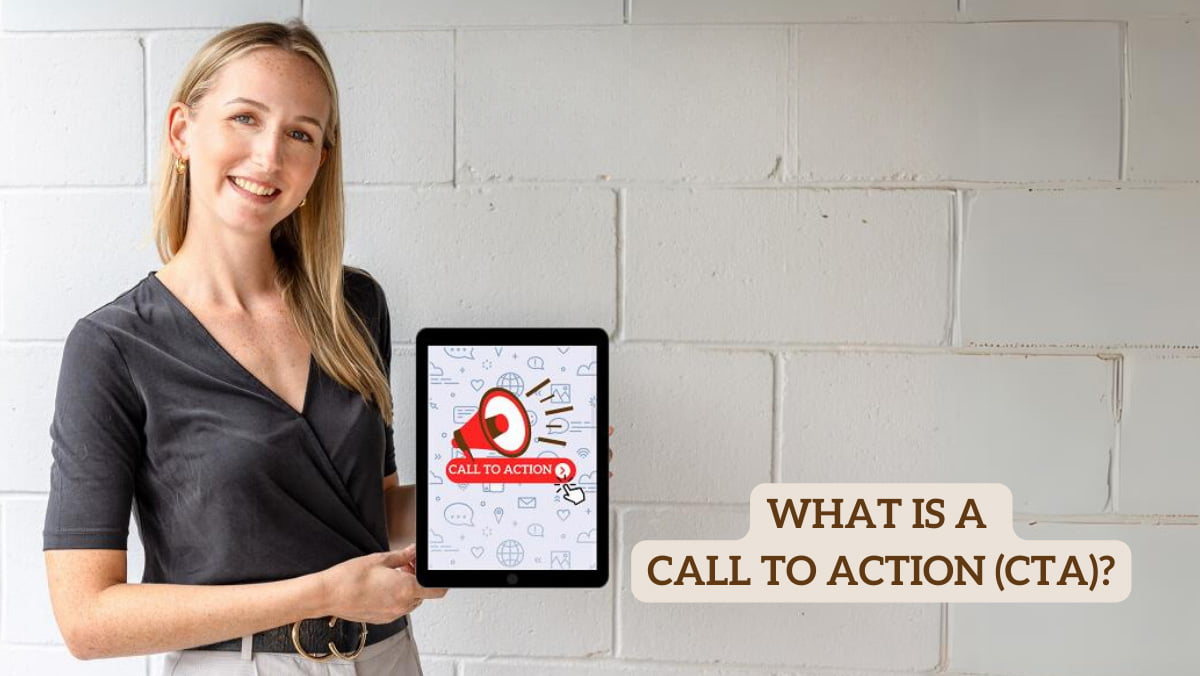
Ever written a blog or social media post and felt like crickets chirped in response? You’re not alone. The secret weapon to getting readers to engage with your content is a powerful call to action, or CTA. So what is a call to action? A call to action (CTA) acts as a follow-up step, telling visitors exactly what you want them to do next. Learn more about how to create effective CTAs below.
Call to Action – The User’s Next Step
CTAs should always be used as part of your marketing message, whether it be at the end of a web page, blog post, or social media post.
A strong CTA is like a friendly traffic director, standing at key intersections and guiding visitors to a logical next step.
Some examples of a CTA you may have seen before are:
- Visit this page to learn more
- Find out more on our blog
- Subscribe to our newsletter
- Purchase now
- Download our e-book here
Read on to learn about CTA best practices for your marketing platforms.
Crafting Compelling Calls to Action (CTAs)
So, how do you craft a CTA that gets clicks? These best practices apply to CTAs of all kinds:
- Clarity is king: Be clear about what you want visitors to do. Don’t use vague language like “Click Here.” Instead, opt for action verbs like “Download Now” or “Subscribe Today.”
- Benefit-driven actions: People are motivated by what’s in it for them. Highlight the benefit of taking action. For example, “Download our free guide and learn 5 SEO secrets to increase your website traffic!”
- Sense of urgency: Sometimes, a gentle nudge can work wonders. Use strong verbs like “Download,” “Learn,” or “Get” to create a sense of urgency. Consider adding more urgency with phrases like “Limited Time Offer” or “Download Before It’s Gone!”
- Stand out from the crowd: Don’t let your CTA blend into the background. Use contrasting colours, bold fonts, or clear buttons to make it visually appealing and impossible to miss.
Website CTAs
CTAs can be buttons on your website, or they can be links that appear strategically and stand out from the rest of the page.
Some best practices for website calls to action:
- Landing pages are all about conversions, so your CTA here should be the star of the show. Where do you want users to go next, instead of leaving the website? Make it big, bold, and impossible to ignore.
- If you have an e-commerce site, make your “Purchase Now” or “View Cart” very obvious so users complete their transactions.
- End your blog posts with a clear CTA, encouraging readers to download a related resource or subscribe for more content.
- If you have a newsletter, offer CTA options for subscribing.
- The same goes for social media accounts, if you’re trying to attract a following.
Make sure there is value to the user to follow these actions instead of leaving your web page and possibly going to a competitor’s website.
Email Campaign CTAs
Don’t let your email campaigns fizzle out without a call to action. At the end of each email, tell your subscribers what you want them to do next, whether it’s visiting your website or checking out a new product.
Email-specific best practices:
- Personalise: Personalisation is key! Use the subscriber’s name or tailor the CTA to their interests.
- First person: Speak directly to the subscriber with first-person language like “Start my free trial.”
- Keep it short and sweet: Aim for 2–5-word CTAs that are clear and concise.
Social Media Attention Grabbers
On social media, your CTAs need to stand out from the crowd. Anything without value to the reader will be scrolled past immediately, so make your CTA a bit longer if necessary. For example:
- “Download Your Free E-book: 10 Tips to Master Social Media Marketing”
- “Limited Time Offer: Get 20% Off Your First Purchase!”
- “Want to Learn More About [Topic]? Subscribe to Our Newsletter!”
- “Start Your Free Trial Today!”
- “Call Today to book your Appointment”
- “Buy Here Now!”
Refine, Test, and Convert
By incorporating these tips, you’ll be well on your way to crafting CTAs that convert. Remember, a strong CTA is like a friendly handshake at the end of an online conversation. It leaves a lasting impression and compels visitors to take the next step. So, refine your CTAs and then do some testing.
Test different variations, track your results, and see what resonates with your audience. With a little creativity and these best practices, you’ll soon be crafting CTAs that are click-worthy champions.
Need More Help?
Not sure where to start, or don’t have the time to work on your CTAs?
Hopefully we’ve answered your question ‘what is a call to action’ now?
At Planet Marketing, we’re a team of website development experts passionate about creating websites that not only look great but also convert visitors into customers. We offer website audits to pinpoint areas for improvement, website upgrades to refresh your existing site, and new website design services to craft a website from scratch.
Let’s use our expertise to help you turn your website into a lead-generating machine! If you have any questions or are ready to get started, contact us today.
How can we help you? To find out, Book your Free Strategy Session! (that’s our CTA!)
Planet Marketing provides practical and sustainable marketing advice – helping you determine what marketing suits your business best.
Naturally Better Marketing…






